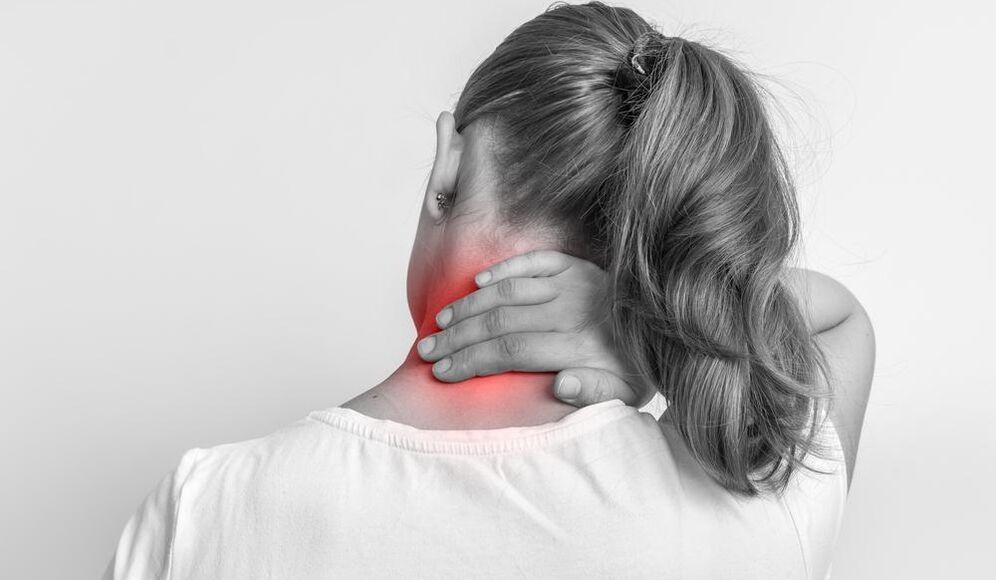Osteochondrosis of the cervical spine is characterized by specific complaints of patients.

As a rule, the first and most common are pain.
They appear in the neck, between the shoulder blades, in the hands. Pain in the joints (wrist, elbow or shoulder), concomitant osteochondrosis of the cervical spine, can be characterized as shooting or pain, provoke numbness, tingling. In addition, it is possible to increase the sensitivity of the limbs to the influence of low temperatures, a decrease in strength and the development of clumsiness in the hands.
Osteochondrosis of the cervical spine is often accompanied by a headache. However, they can also be of a different nature. Shooting sensations in the forehead area, in the ear, in the eye sockets and a feeling of numbness on the scalp are typical.
This disease is also characterized by various vegetative disorders. These include instability of blood pressure and pulse, a lump in the throat and palpitations, shortness of breath and, in some cases, the development of panic attacks.
In advanced forms, osteochondrosis of the cervical spine is accompanied by a severe restriction of movement, muscle weakness of the upper and lower extremities, as well as disruption of cerebral circulation.
There are frequent manifestations of dizziness, unsteadiness when walking, general weakness, blurred vision. Patients often complain of increased fatigue, deterioration in mood and even depression.
Static disturbances in the disease are subluxations of the vertebrae and limited mobility of the segments.
A violation of blood circulation provokes a disruption in brain activity, which is manifested by individual symptoms. This, in turn, can lead to vertebrobasilar insufficiency and, in some cases, stroke.
According to the indications, diagnostic measures are prescribed, including X-ray, with functional tests if necessary; MRI of the brain (head) and cervical spine; Ultrasound dopplerography in the main arteries. If necessary, a triplex or duplex examination of intracranial and extracranial vessels can be prescribed. Blood tests, EEG, audiography, ECG, electronystagmography are mandatory. The examination also includes a consultation with a cardiologist, endocrinologist, ophthalmologist and otolaryngologist.
Osteochondrosis of the cervical spine. treatment
For effective therapy, it is necessary to clarify the diagnosis and identify the causes of the patient's complaints.
How to cure cervical osteochondrosis knows a neuropathologist who selects the necessary measures. It includes physical rehabilitation (exercise therapy), the prescription of medication (if necessary and depending on the symptoms - intravenous infusions and intramuscular injections as well as blockages). The treatment course also includes physiotherapy, acupuncture, massage, hirudotherapy.
Of course, the most effective is to exert a complex effect on the patient's body. However, as practice shows, the longest result of treatment is observed in the physical rehabilitation of patients. In many cases, well-chosen exercise therapy sets can influence the cause of the development of the disease. At the same time, other methods mostly affect the consequences of the disease. Therefore, they are usually considered as additional therapeutic measures.
It should be noted that exercise therapy exercises, as well as additional methods of influence, are always selected individually.




















